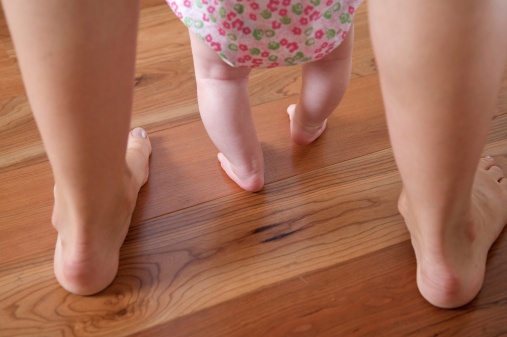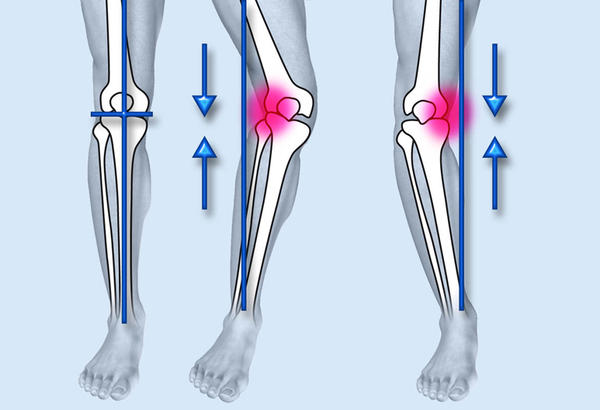How Bow Legs Surgery can Help Your Diagnosed Genu Varum.

Genu Varum, commonly referred to as bow legs, is a condition where the legs have a bowed appearance. The reason for this is an outward bowing of the lower leg in relationship to the thigh. The knees stay wide while standing, even when the ankles and feet are together.
Some people are born with bow legs - while others may develop this problem later on. Genu Varum can be acquired later on in life - in one or both legs.
CAUSES OF GENU VARUM
There are several issues that can cause this condition: tumors, infection or fractures that have not healed properly.
The Causes
- Congenital
- Deficiencies
- Arthritis
- Fractures
- Infection and Tumors
- Skeletal problems
Congenital
Bow legs are commonly seen in infants until they begin to walk which can be due to a curving of the leg bones (tibia and femur) being curved outwards.

In the first year of life, the joints of the knees move closer together and the femur is sloped inward as well as downward toward the knee. This causes the legs to be straight and normal in appearance. Usually, during this time, the tibia straightens out and the soles of the feet point down in a natural position. The bones of the legs become hardened as well as straightened - which allows the baby to walk.
The look of bow legs most often corrects itself over time as the child grows.
When the process of straightening and hardening of the bones does not occur, the child's condition of having bowed legs becomes permanent.
Deficiencies
Other causes for bow legs in children are deficiencies in vitamin D, magnesium, phosphorus or calcium. These deficiencies may not interfere with the child learning to walk - but may be the cause for arthritis and bow legs later on.
Arthritis
The constant stress and wear and tear that we put on our knees can gradually wear them out. Genu Varum can add to the problem - or even be the result of arthritis. Genu Varum may not cause pain, but if left untreated can become painful and increase the discomfort of arthritic knee joints.
Fractures
Stress fractures, especially of the knee may go unnoticed for a long period of time. At first, you may barely notice pain with a stress fracture of the knee. The pain gradually worsens, and the bone will adapt to the increased load put upon it. Left untreated, the bone rebuilds. If the bone rebuilds improperly, a bowed leg may be the result.
Any fracture of the knees, tibia or fibula that has not healed properly may result in Genu Varum.
Bone Tumors and Infections
The abnormal curving of the legs, giving them a bow-like appearance may also be caused by bone tumors or infections. These conditions - though not common - must be promptly treated by your physician.
Skeletal Problems
Skeletal problems may worsen with age and/or weight gain, as more pressure is added to the legs. Left untreated, this condition usually causes discomfort and significant pain.
Genu Varum Fixes
Over the years there have been many treatments to try and help those who suffer from Genu Varum. Special shoes, casts, leg braces are sometimes used to treat bow legs in young children.
Normally the only option for adults who suffer from bow legs is surgery.
Surgery for Genu Varum
To straighten the leg and correct the alignment of the leg, a minimally invasive surgical procedure is performed. The procedure is a short one - approximately one hour, with a one-night hospital stay.

With only a one-half inch incision, the patient's bone is partially cut. The leg is then straightened with the help of an external fixator. The fixator is applied to the outside of the leg through one-quarter inch incisions. This fixator helps to strengthen the leg and aids in supporting the bone as it heals.
Post-operatively, those who undergo bow legs surgery are encouraged to put weight on the leg and walk. There are no casts necessary after the surgery. Knee and ankle exercises are also encouraged.
How Bow Legs Surgery Can Help
Whether you have had bow legs for most or all of your life - or if you have acquired this condition later on - you can be helped by bow legs surgery.
Once you undergo this corrective surgery, you will notice a dramatic decrease in your pain and discomfort - not to mention the improved appearance of your legs. An added bonus is that you may gain up to one-half inch in height!
To understand the cause of your Genu Varum - the most important thing to do is visit your orthopedist. Your doctor will provide a comprehensive consultation in order to identify if you are a candidate for bow legs surgery.
Not only will your orthopedist be able to let you know if you are a candidate for bow legs surgery - he will be able to explain the details of the surgery, the recovery and expectations of the procedure.
If you have suffered from Genu Varum and have wanted answers to your many questions - don't put off consulting your doctor as soon as possible.


